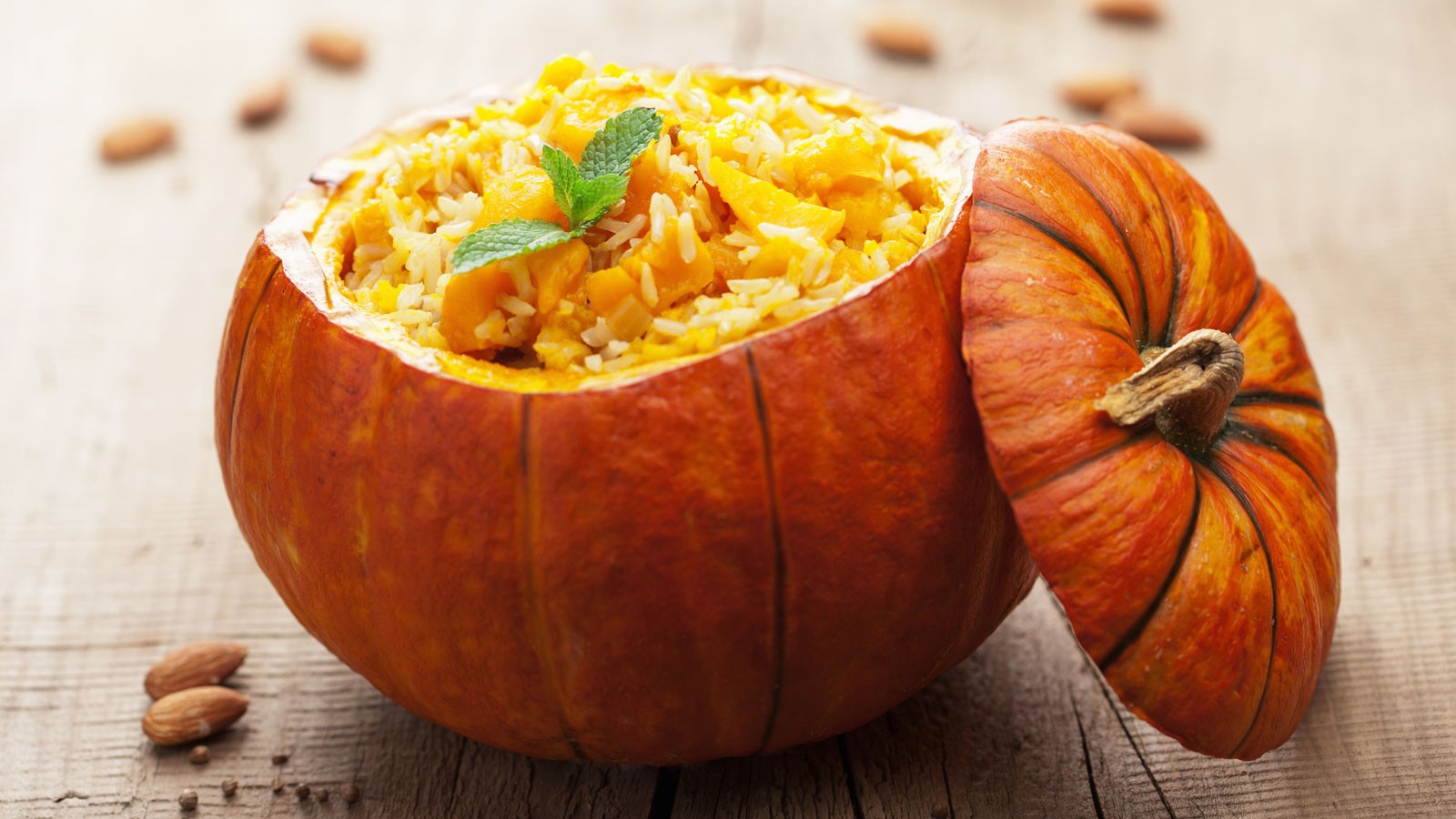Ask an Expert — Pumpkin Power: The Health Value of a Fall Favorite
Pumpkin risotto inside a hollowed pumpkin bowl.
Fall is in full swing, and pumpkins are populating porches everywhere. Not only are pumpkins used for decorating and carving, they can be used in casseroles, soups, sauces, desserts, snacks, and more.
Many people aren’t aware of the great health benefits of pumpkin, which is one more reason to enjoy it. Pumpkin is low in calories and packed with nutrients, such as fiber and beta-carotene. It is also rich in potassium.
Pumpkins are versatile and can be steamed, baked, boiled, microwaved (remember to cut slits in them), and cooked in the pressure cooker. Once cooked, they can be mashed, pureed, cubed, and stored in the fridge or freezer in air-tight containers. There are many options for mashed or pureed pumpkin (fresh or canned). Some include muffins, biscuits, quick breads, soups, and sauces for mac and cheese or other pasta. Pumpkin can also be added to chili, smoothies, cheese balls, and hummus. Cubed and cooked pumpkin can be used with pasta, risotto, soups, salads, and casseroles.
Consider these tips and guidelines from the National Center for Home Food Preservation to make the most of this year’s pumpkin patch.
Drying Pumpkin Seeds
Carefully wash pumpkin seeds to remove the clinging fibrous pumpkin tissue. Pumpkin seeds can be dried in the sun, in an electric dehydrator at 115-120 F for 1 to 2 hours, or in an oven at a very low, warm temperature for 3 to 4 hours. Stir frequently to avoid scorching. Do not store dried seeds if any moisture is left in them.
Drying Pumpkin and Pumpkin Leather
Wash, peel, and remove fibers and seeds from pumpkin (or Hubbard squash) flesh. Cut into small, thin strips no more than 1-inch wide by 1/8-inch thick. Blanch strips over steam for 3 minutes and dip briefly in cold water to stop the blanching action. There is no need to cool to room temperature before drying. Drain excess moisture. Dry the strips in an electric dehydrator until brittle.
Pumpkin also makes excellent dried vegetable leather. Purée cooked pumpkin and strain. Add honey and spices, then dry on a home food dehydrator tray.
Freezing Pumpkin
Freezing is the easiest way to preserve pumpkins, and it yields the best quality product. Select a full-colored mature pumpkin with fine texture (not stringy or dry). Wash, cut into cooking-size sections and remove seeds. Cook until soft in boiling water, steam, a pressure cooker, or an oven. Remove pulp from rind and mash. To cool, place the pan containing pumpkin in cold water and stir occasionally. Pack into rigid containers leaving headspace, and freeze.
Canning Pumpkin
Only pressure canning methods are recommended for canning cubed pumpkin. There are no properly researched directions for canning mashed or pureed pumpkin or winter squash, pumpkin butter, or any other pumpkin preserves (jams, jellies, etc.). All low-acid foods, including pumpkin, must be canned using tested pressure canning processes to be safe. Older methods, such as boiling water canning for vegetables, oven canning, and open-kettle canning, have been discredited and can be hazardous, so follow specific instructions for canning to be safe.
For information on harvesting pumpkins, see the video, When to Pick a Pumpkin.
CONTACT
Kathy Riggs
Family and Consumer Sciences Professor
Extension
435-586-8132
kathleen.riggs@usu.edu
Comments and questions regarding this article may be directed to the contact person listed on this page.







